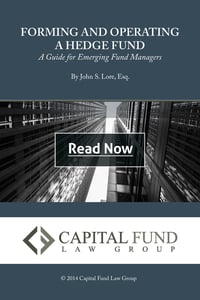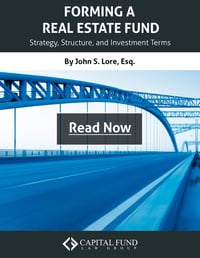Real Estate Fund Investment Terms
One of the most important aspects of forming a real estate fund is to set the terms of the investment. When properly structured, real estate fund offering documents contain terms that adequately protect the fund sponsor and are attractive to investors.
Investment Terms
Real estate fund terms are driven by the fund’s strategy, the market trends within the fund’s specific asset class, and the particular needs and objectives of the fund. It is crucial that the investment fund legal counsel have an in-depth understanding of current investment market trends and how those trends affect the strategy the fund will employ.
Fund Expenses
During the formation process, the fund sponsor designates which of the expenses of the fund will be borne by the manager and which will be borne by the fund. Typically, the fund bears expenses directly related to forming and operating the fund, including, but not limited to legal formation costs, accounting, and administrative services, regulatory filings, brokerage costs, and clearing costs.
Sponsor Fees
A real estate fund sponsor’s compensation includes the carried interest (generally approximately 20% of the fund’s capital appreciation) and fees. There are a number of fees that real estate sponsors can charge, depending on the fund’s negotiating position with investors. We recommend that the shorter the track record of the sponsors, the more streamlined the fee structure should be. The most basic fee is an investment management fee. The investment management fee is assessed annually, typically ranging from 0.5% to 2%, (based on committed capital during the commitment period and based on capital contributions thereafter). Other potential fees include property management fees, leasing fees, financing fees, and additional administrative fees.
Capital Commitments
When real estate fund investors subscribe to an investment in the fund, they usually do not invest the capital immediately. Instead, they sign an agreement committing them to invest a certain sum (a capital commitment) when called for by the fund sponsor (a capital call). Upon the capital call by the sponsor for a specific percentage of the investor’s capital commitment, the investor will have a period of amount of time, usually no more than three to four weeks, to satisfy the capital call. Once contributed, an investor’s capital will typically only be returned upon the occurrence of a capital event, such as a sale or refinancing of all or a portion of the fund’s assets, or upon the fund’s payment of dividends to investors resulting from positive cash flow from operations.
Preferred Return
Many real estate funds include a preferred return. Preferred returns range from 6% to 12% of the initial capital contribution. The preferred returns are accrued and compounded annually. The preferred return is distributed in accordance with the distribution waterfall upon capital events.
Distribution Waterfall
The distribution provisions control the priority of distributions from capital events. The priority of distributions between limited partners and the general partner is referred to as the “distribution waterfall.” The distribution waterfall can be pictured as a set of allocation pools. When a higher priority allocation pool is filled, the capital flows into the next pool. Distributions waterfalls vary significantly from fund to fund, depending on the fund’s negotiating power, but generally follow the following conceptual framework.
Hurdle rates follow the following three phases:
(ii) Preferred return and recovery phase;
(iii) catch-up phase; and
(iv) carried interest phase
(i) Preferred Return/Recovery Phase
The first phase in the distribution waterfall is the preferred return and recovery phase. Generally, investors receive distribution first, until their preferred return and capital contributions have been paid in full.
(ii) Catch-up Phase
After the preferred return and capital contributions are recovered by investors, the remaining funds are split between the investors (typically 80%) and the sponsor, in the form of carried interest (usually 20%). However, since the limited partners have already received substantial distributions, the distribution waterfall now accelerates allocations to the general partner according to the catch-up rate (often 50-60%). In the catch-up phase, the general partner receives allocations at the catch-up rate until the carried interest allocations are caught up.
(iii) Carried interest Phase
Following the catch-up phase, capital allocations will be distributed based on the carried interest (typically 20%). The general partner will then receive 20% of the distributed amount, while the limited partners will receive 80%.
General Partner Clawback
Upon liquidation of the fund, limited partners are sometimes distributed less than the agreed-upon allocation (due to early positive performance and lagging performance toward the end of the fund). When this occurs, the limited partners “clawback” the unpaid amount from the carried interest distributed to the general partner. Since the clawback provision is only activated at the end of the fund, fund sponsors must be cautious about maintaining reserves to satisfy any such contingencies.
Side Letters
Most offering documents allow the management team to negotiate special terms (known as side letters) that do not apply to other investors. Often the special arrangement involves better economic terms, such as reduced management fees. Care must be taken, however, not to allow side letters to prejudice other investors. For example, side letters that provide additional information rights or preferential allocation should be avoided.
.
INSTRUCTIVE RESOURCES
Capital Fund Law Group has authored numerous investment fund publications, including instructive eBooks, white papers, blog posts, and sample offering document excerpts with illustrative footnotes. These complimentary downloads are dedicated to helping fund managers understand the legal fundamentals of launching and operating an investment fund.





